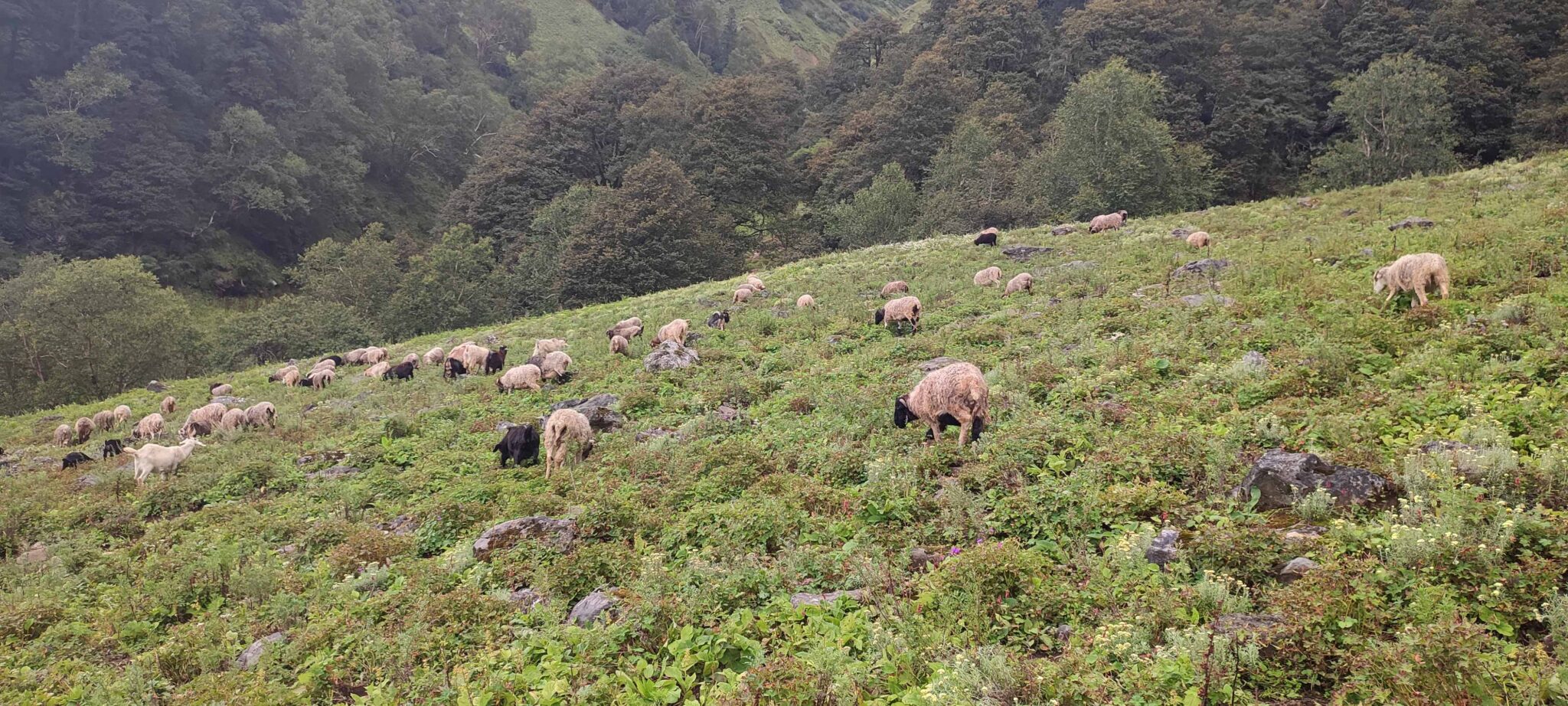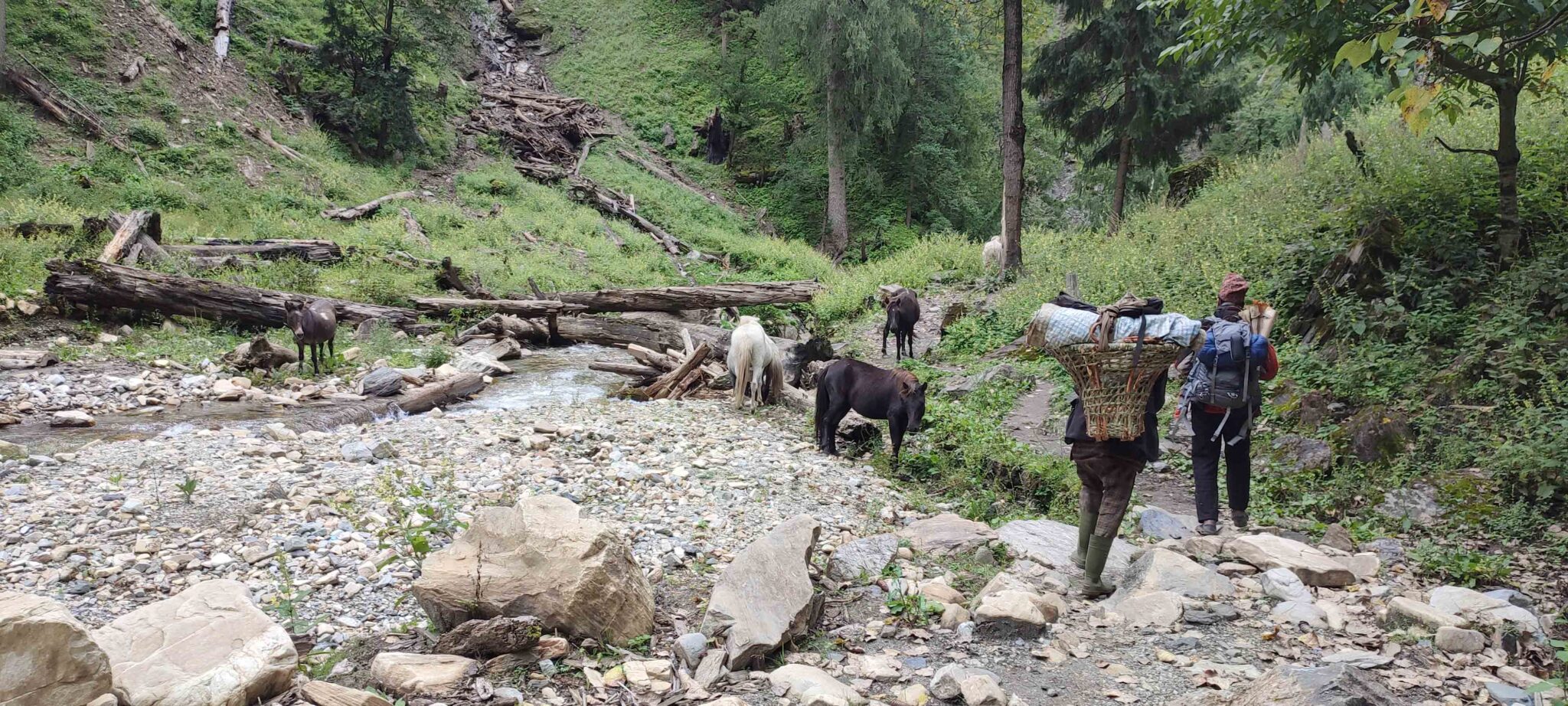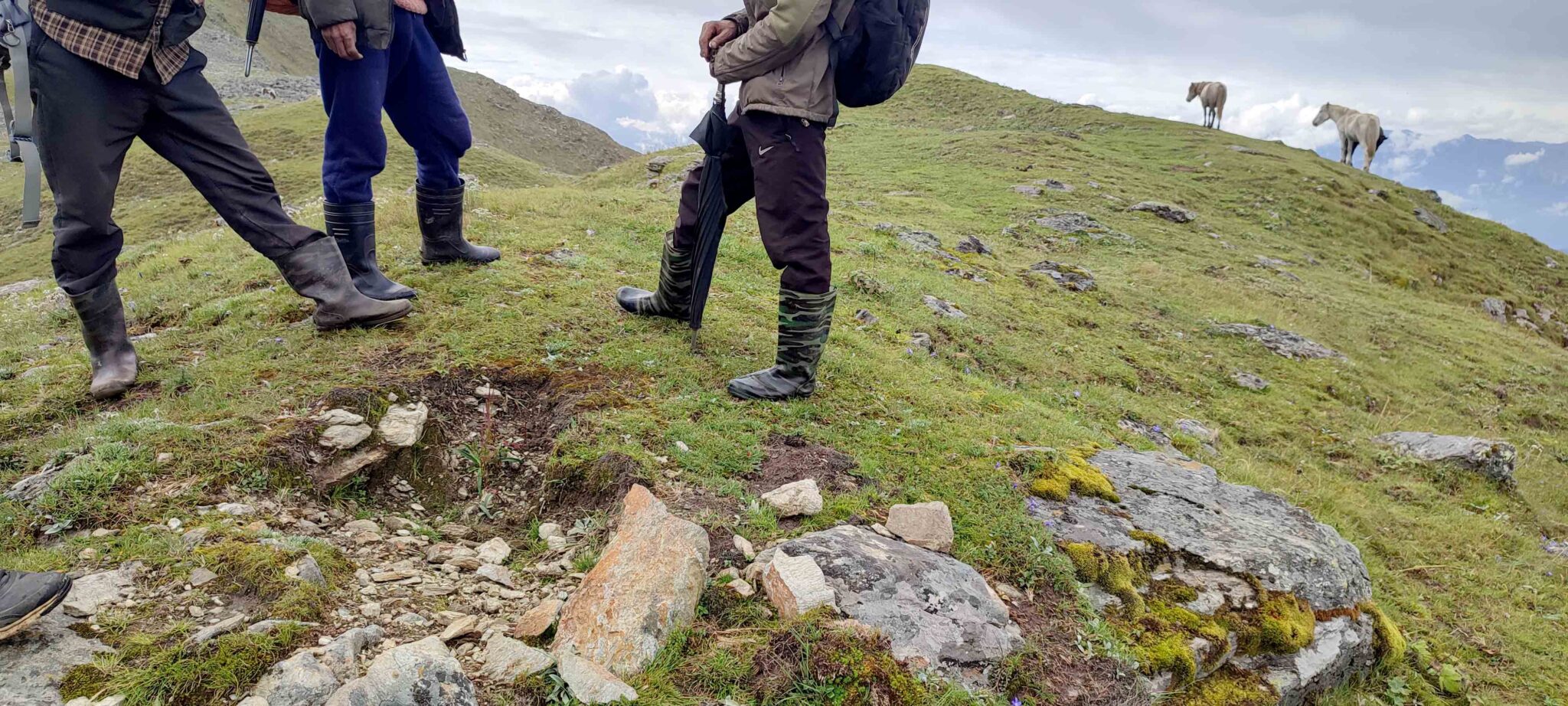Almost 1,500 sheep have been killed in lightning strikes in Baghjale in Jumla District. As they lose their cattle to lightning, farmers are in a dire financial situation. But the issue has failed to draw the attention of administrators.
Mukesh Pokharel |CIJ, Nepal
Shankar Nepali, a resident of Lum in Patarasi Rural Development Committee-4 in Jumla, had bought 20 sheep with borrowed money worth Rs250,000. He was planning to sell some sheep this Dashain to pay off the interest and to spend during the festival. However, a lightning incident on 1 July 2022 ruined his plans.
“I was planning to pay off the interest and buy groceries by selling five goats, but now my entire shed is empty,” Nepali said.”I didn’t even go to India thinking I would work here. How would I pay off the loan now?” he asked.

Nepali could not sleep for three nights after his sheep were killed. When the lightning occurred, Nepali had taken refuge under a tent in the meadows along with other shepherds. It started to rain heavily around 1 pm, and after an hour of rain, thunderous lightning struck, lighting up the fields for a second.
Then came darkness. “We all fainted. When we came to our senses in half an hour, we saw that the sheep had fallen to the ground,” Nepali said.
On that day, fifty of Ram Bahadur Reule’s sheep were killed, while over 100 went missing. For two days afterwards, Ram Bahadur remained senseless. “He slept all day and night. He did not speak with anyone,” Suk Reule, Ram Bahadur’s son, said. “The sheep were all the property we had. How can we overcome the fact that we raised the sheep by staying in the meadows for the entire year?”
In Patarasi in Jumla, many people like Nepali and Reule face the loss of humans and cattle to lightning strikes each year.
Patarasi is the top rural municipality in the district where sheep rearing is a profession. According to Gagan KC, chief of the Animal Husbandry Department of the rural municipality, there are around 30,000 sheep in the rural municipality.
Sheep rearing and agriculture form the source of income for the people of the rural municipality, which has a population of 19,000 people and 3,300 households. This, according to KC, is because the area has enough grasslands that provide fodder for the sheep.
According to Dhan Bahadur Budha, an officer at the District Veterinarian’s Office, Jumla, a sheep usually sells for between Rs20,000 and Rs30,000. “We help the farmers sell the sheep outside of the district. The price of the sheep has increased from last year.”
Last year, around 1,500 sheep were sent to Pokhara for sale in coordination with the District Veterinarian’s Office. The sheep from Jumla are considered to be suitable for meat.

shepherd’s hut.
According to Patarasi Rural Municipality, 130 sheep were killed by the lightning strike on 1th July . Although the villagers claimed 300 sheep had been killed, a police team found that only 130 of them had been killed.
“We counted only the sheep whose carcasses we found. According to the villagers, 250 sheep are still missing.”
The District Animal Veterinarian’s Office, Jumla, started keeping a record of sheep three years ago. The office kept records after farmers asked for compensation claiming their sheep had been killed. According to the record, 217 sheep had been killed by a lightning strike in Patarasi’s Baghjale area on 24 August 2020.
Similarly, on 19 Jun 2021, 81 sheep and goats were killed in Bajeri Patan in Patarasi-4. in 2013, almost 700 sheep had been killed by lightning and storm.
Shuk Bahadur Raut, a resident of Lum, says around 1,500 sheep have been killed since 2015.
According to Kali Bahadur Budha, former ward chairperson of Patarasi Rural Municipality-4, farmers have faced more losses than mentioned in records. “We started keeping records last year. Not only sheep but mountain goats, mules and horses have lost their lives in lightning strikes,” Budha said.
Why always Baghjale?
Why do lightning strikes frequently occur in Baghjale, which is considered suitable for sheep grazing? A study has yet to be conducted on this issue. However, the incidents of lightning strikes have increased due to global warming and climate change, as per experts.
Shreeram Sharma, Associate Professor of Physics at Amrit Science Campus, states the rate of effect due to lightning increases 10 to 20-fold with an increase of 1 degree in temperature. According to the Department of Hydrology and Meteorology, Jumla has witnessed a yearly temperature rise of 0.052 degrees Celcius. At this rate, Jumla has seen an increase of 1 degree Celcius in the past 20 years.

According to Dr Indira Kandel, Senior Meteorologist at the Department of Hydrology and Meteorology, the temperature rise in Jumla is substantial and expected to create havoc in the ecology.
According to experts, a lightning strike can be foretold half an hour earlier before the strike. “Censors detect clouds that are susceptible to lightning strikes,” Sharma said. “We can minimise the risks if censors are put up in risk areas and farmers are given early warning.”
According to the National Disaster Risk Reduction and Management Authority, there are plans to set up early warning systems in places where there are risks of lightning strikes. The Authority says this minimises the risks as the farmers receive warnings in advance.
Insufficient compensation
The Karnali Province Government and the Patarasi Rural Municipality have been providing compensation to farmers who lose their sheep. However, the compensation is insufficient compared to their losses.
According to Dan Bahadur Bista, information officer of Patarasi Rural Municipality, the guideline, prepared in 2020, has a provision of providing Rs2,000 per sheep. Bista said, “Although the compensation is too less, we provide it thinking it would help a bit.”

A ditch formed by lightning strike in Baghjale.
The Karnali Province Government pays compensation of Rs4,000 per sheep. Purna Singh Bohora, the chairperson of the rural municipality, agreed that the compensation was not enough. “The compensation is nothing, and we are looking for long-term solutions,” he said.
According to Bohara, installing an early warning system or ‘earthing’ to reduce the risks are technologies the rural municipality cannot afford. “So we are in talks with the United Kingdom Government’s Nepal Climate Support Program for establishing an earthing system in the meadows.”
Why the issue fails to grab the attention
More work has to be done towards minimising the risks of lightning strikes because of the apathy of political parties towards this issue.
According to Gauri Nanda Acharya, a local leader of the Nepali Congress and the chief of the District Coordination Committee, this is a technical and scientific issue that has failed to attract political parties.
“We cannot stop lightning strikes by making it an electoral issue. We focus on the loss people have had to bear. We will discuss more on it,” Acharya said.
Experts say there is a need to implement an effective sheep insurance program to support the farmers.
According to Anil Pokharel, CEO of the National Disaster Risks Mimnimisation and Management Authority, the insurance program has yet to reach the targeted farmers.
According to Bohora, the rural municipality is planning to run an insurance program even if it means the rural municipality has to pay the premium for the same.
As per a vulnerability report, risk analysis and adaptation prepared by the Ministry of Forest and Environment, incidents of flooding, landslides, lightning and glacial outburst are increasing in Nepal.
Although major political parties have included climate change as one of their agendas in their manifestoes, they have made little effort to address it.
According to Pokharel, the Authority’s chief executive officer, it is impossible to deal with issues related to a natural disaster without the commitment and involvement of political parties. “It should become a political issue if we are to secure the achievements we have made in the past 20 years,” Pokharel said.
According to Raju Pandit, a climate expert, political parties must work actively to introduce programs such as the insurance of cattle and farming.
A hundred deaths a year
The government has no data on the financial loss due to lightning strikes. According to a study by a team including Associate Professor Sri Ram Sharma, 930 individuals were killed in lightning strikes between April 14, 2011, and April 15, 2020. This means that almost 103 individuals die each year due to lightning strikes. While 50.8 percent of the victims are men, 35.3 percent are women, and 14 percent are unidentified. In the same period, 2,454 individuals have been wounded in lightning incidents. An analysis of the data collected for this research shows that lightning incidents cause the highest number of deaths due to natural disasters.
How does a lightning strike occur?

Shree Sharma, Associate Professor, Department of Physics, Amrit Science Campus
According to Shree Sharma, Associate Professor of Physics at Amrit Science Campus, a lightning strike is a high-voltage electric current due to friction within clouds. Globally, there are three lightning strike hotspots—the middle part of Africa, the middle part between South and North Americas, and East Asia.
East Asian countries such as Indonesia, Singapore, and Malaysia are epicentres of lightning strikes. According to Sharma, the Bay of Bengal also has a small region that is susceptible to lightning strikes, and that is what affects such strikes in Nepal.
According to Sharma, Terai and Chure regions witness maximum lightning strikes because of the temperature. As the temperature rises, hot air ascends towards the atmosphere. When the vapourised air meets obstruction around the northern hills, there is a disturbance in the atmosphere, which leads to lightning strikes. April, May, June and July record the highest lightning strikes. While most lightning strikes usually occur between 12 noon to 4 pm, monsoon and post-monsoon periods witness most lightning strikes at night.
A report on the human cost of lightning strikes in Nepal has said 2,400 individuals globally lost their lives while 240,000 were injured. According to an article by Basanta Raj Adhikari, Assistant Professor at the Institute of Engineering, Tribhuvan University, lightning strikes have increased in Nepal since 1990.
However, according to Associate Professor Sharma of Amrit Science Campus, there is no telling if the strikes have increased since there has been no data on lightning strikes in Nepal for more than ten years.



